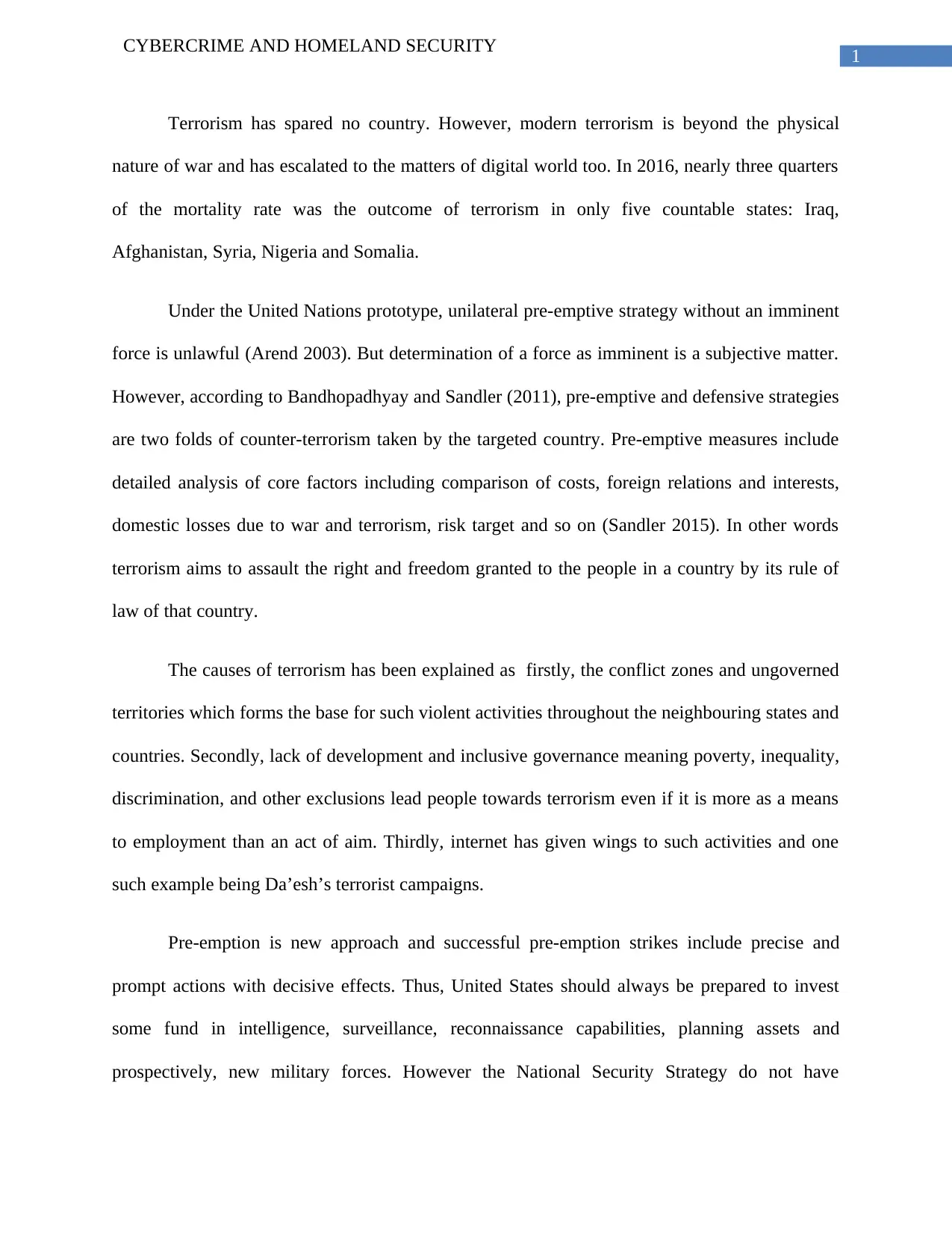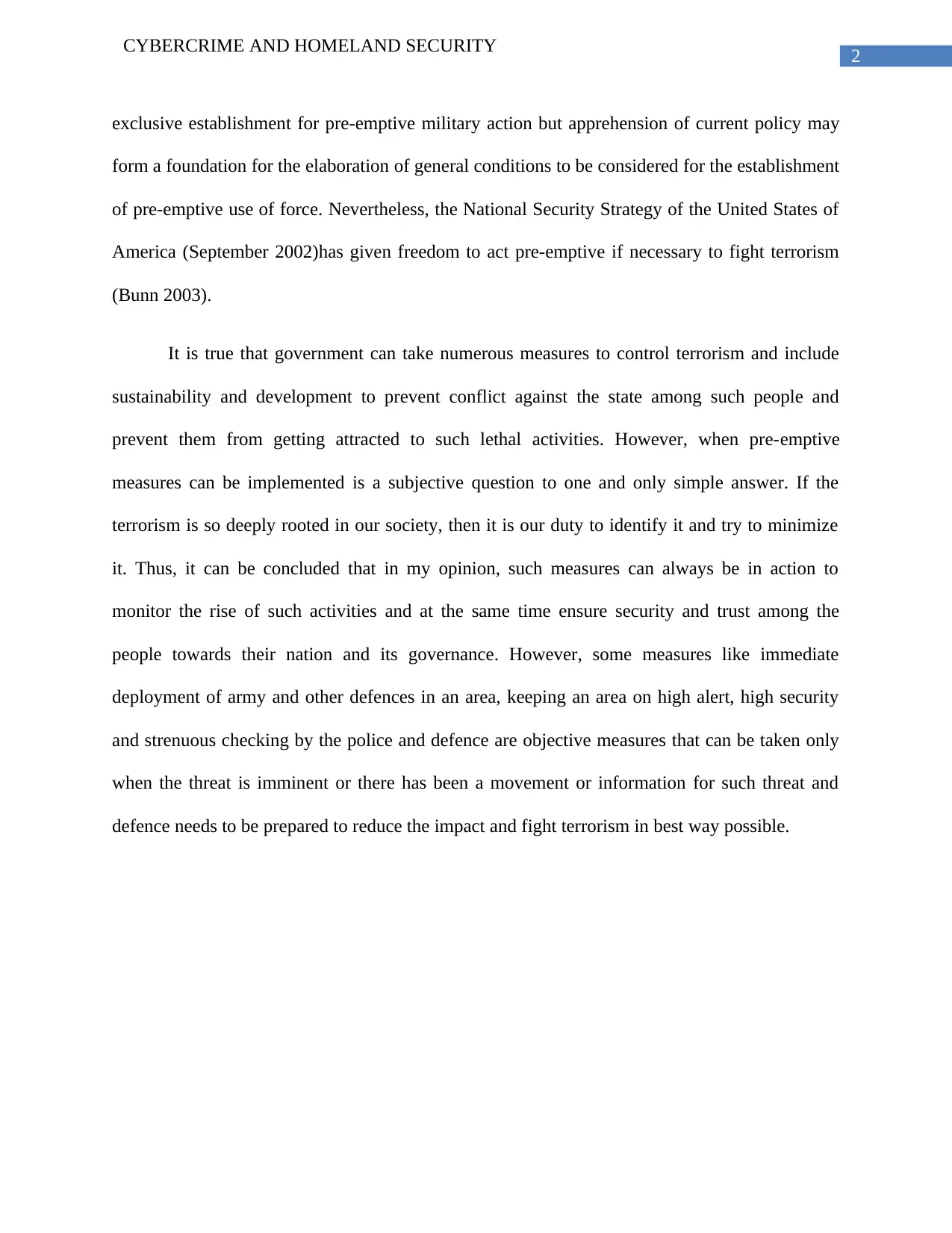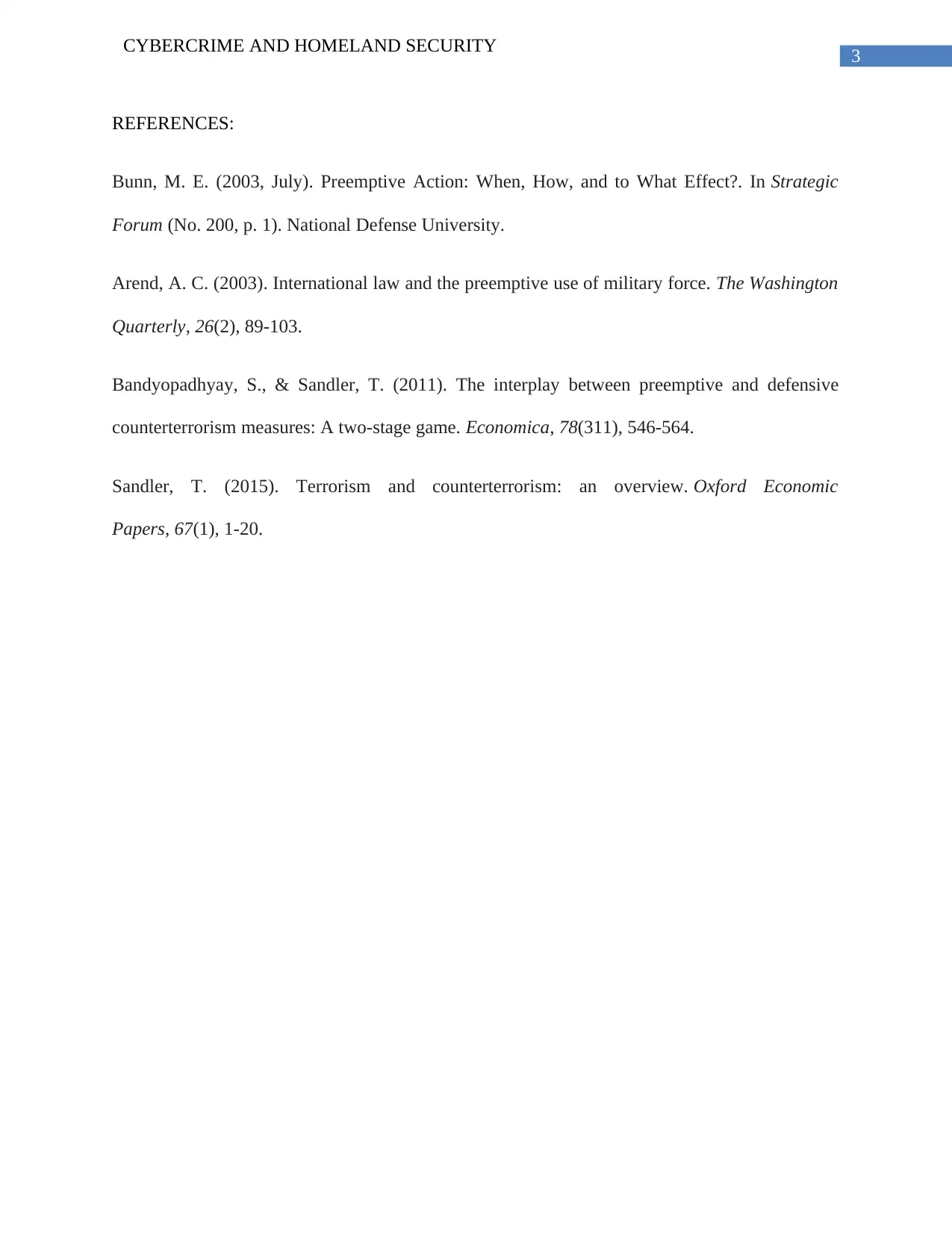Cybercrime and Homeland Security Essay: Preemptive Measures Analysis
VerifiedAdded on 2022/09/15
|4
|756
|16
Essay
AI Summary
This essay, titled "Cybercrime and Homeland Security," addresses the critical issue of preemptive measures in the context of modern terrorism. The author begins by highlighting the evolving nature of terrorism, which now extends into the digital realm, and the devastating impact it has had globally. The essay explores the legal complexities of preemptive strategies, referencing the United Nations' stance on unilateral action. It then delves into the dual nature of counter-terrorism, distinguishing between preemptive and defensive strategies, and emphasizes the importance of analyzing various factors, such as costs, foreign relations, and domestic losses, when considering preemptive measures. The essay also examines the root causes of terrorism, including conflict zones, lack of development, and the role of the internet. It concludes by arguing that preemptive measures should be consistently employed to monitor and mitigate the rise of such activities while ensuring security and trust within a nation. The author also acknowledges the need for objective measures, such as increased security and intelligence, when facing imminent threats. The essay provides a comprehensive overview of the challenges and considerations involved in addressing cybercrime and homeland security in the face of terrorism.
1 out of 4











![[object Object]](/_next/static/media/star-bottom.7253800d.svg)